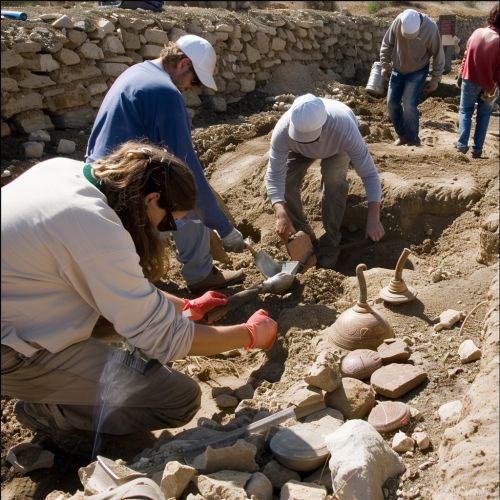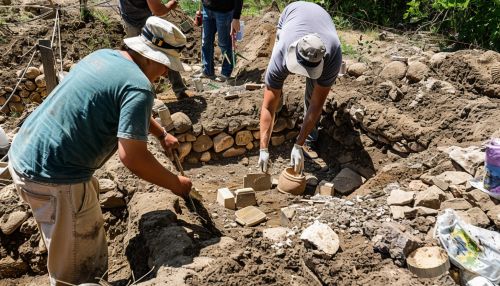New Archaeology
Introduction
New Archaeology, also known as Processual Archaeology, is a theoretical movement in archaeology that emerged in the 1960s. This movement was a radical departure from the traditional, descriptive nature of archaeology, emphasizing instead the use of scientific methods, hypothesis testing, and the development of explanatory frameworks.


History and Development
The term "New Archaeology" was first coined by archaeologist Lewis R. Binford in a 1962 article, where he argued for a more systematic, scientific approach to archaeological research. This marked a shift from the traditional, descriptive approach of Cultural-Historical Archaeology, which focused primarily on the classification and description of artifacts.
New Archaeology sought to explain why past societies changed and how they functioned, using rigorous scientific methodologies and hypothesis testing. This approach was heavily influenced by the scientific method, as well as theories from the social sciences, particularly anthropology and sociology.
Key Concepts and Methodologies
New Archaeology is characterized by several key concepts and methodologies, including:
- Systems Theory: This is the idea that societies can be understood as complex systems, with various parts that interact in predictable ways. By studying these systems, archaeologists can gain insights into how past societies functioned and changed over time.
- Quantitative Methods: New Archaeology emphasizes the use of statistical analysis and other quantitative methods to analyze archaeological data. This includes techniques such as seriation, cluster analysis, and factor analysis.
- Hypothesis Testing: Rather than simply describing artifacts, New Archaeologists aim to develop and test hypotheses about past societies. This involves formulating a hypothesis, collecting and analyzing data, and then either supporting or refuting the hypothesis based on the results.
- Middle Range Theory: This concept, developed by Lewis Binford, involves the use of ethnographic and experimental data to interpret archaeological findings. Middle range theory serves as a bridge between the "hard" archaeological data and the broader theoretical interpretations.


Criticisms and Controversies
Despite its significant contributions to the field of archaeology, New Archaeology has also been the subject of numerous criticisms. Some of these include:
- Lack of Consideration for Individual Agency: Critics argue that New Archaeology's focus on systems and structures often overlooks the role of individual agency in shaping societies.
- Overemphasis on Scientific Methods: Some argue that the heavy emphasis on scientific methods can lead to the neglect of other important aspects of archaeology, such as the interpretation of symbolic and cultural meanings.
- Western Bias: Critics also point out that New Archaeology, with its roots in Western scientific traditions, may not be applicable or appropriate for studying all societies, particularly non-Western ones.
Impact and Legacy
Despite these criticisms, New Archaeology has had a profound impact on the field of archaeology. It has led to the development of numerous new methodologies and theoretical frameworks, and has helped to establish archaeology as a rigorous, scientific discipline.
Moreover, the debates and controversies sparked by New Archaeology have led to the development of other archaeological theories, such as Post-Processual Archaeology, which seeks to address some of the criticisms of New Archaeology.
